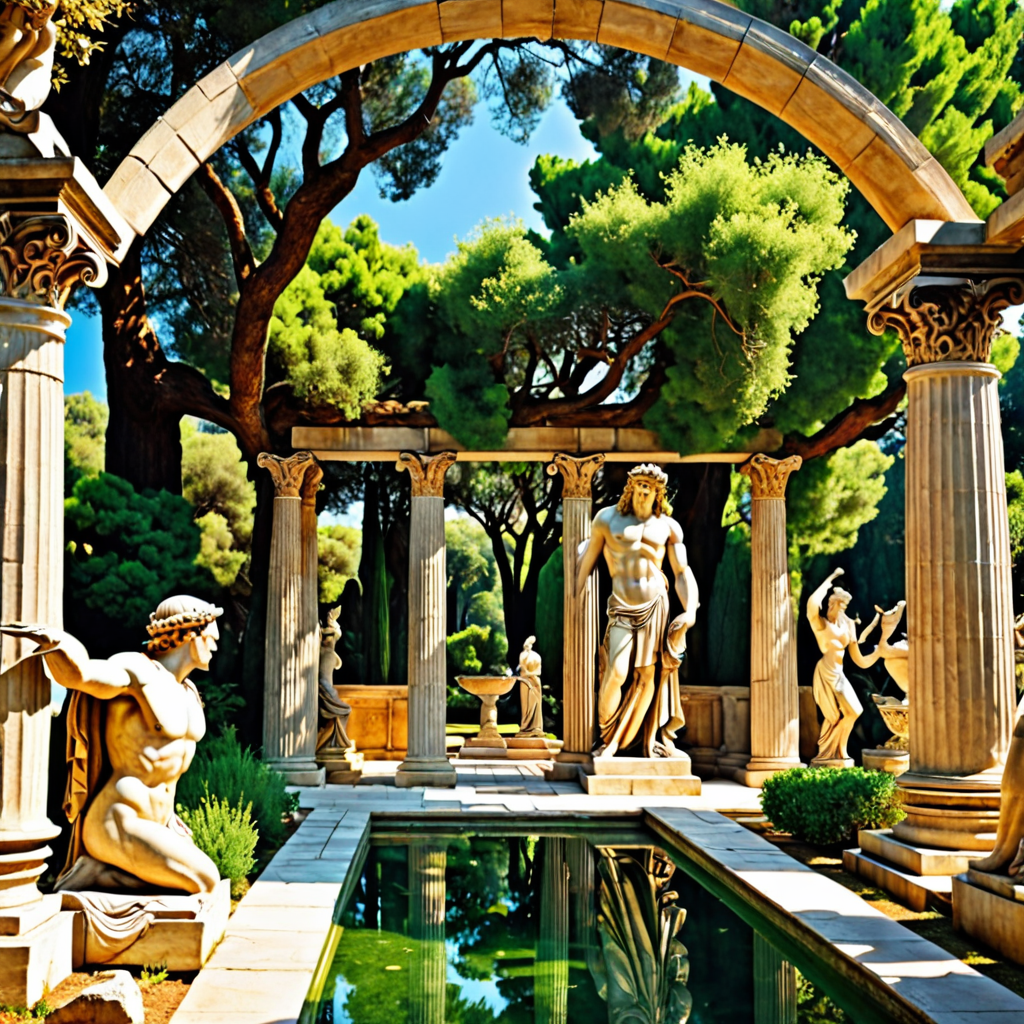The Underworld: Myths That Explore the Nature of Life and Death
I. Introduction
The concept of the underworld has fascinated humanity for millennia, serving as a backdrop for various myths and cultural narratives. The underworld is often defined as a realm where souls go after death, a place that varies significantly across different cultures. From the Greek Hades to the Egyptian Duat, the underworld serves as a powerful symbol reflecting our deepest fears and hopes about mortality.
Life and death themes are prevalent in mythology, offering insight into how different societies understand existence and the afterlife. This article aims to explore the underworld across various cultures, examining its significance in mythology and how it shapes our understanding of life, death, and morality.
II. The Concept of the Underworld Across Cultures
The underworld is a universal theme found in many world religions, each presenting a unique view of the afterlife.
A. Overview of underworld beliefs in major world religions
- Ancient Greek mythology: The underworld, known as Hades, is ruled by the god Hades. It is divided into regions such as Elysium for the virtuous and Tartarus for the wicked.
- Egyptian mythology: The Duat is the Egyptian underworld, where Osiris judges the souls of the deceased. The weighing of the heart against a feather is a pivotal ritual that determines one’s fate.
- Norse mythology: Hel, the realm ruled by the goddess Hel, receives those who do not die in battle. The Norse view of the afterlife is closely tied to valor and honor.
- Hindu mythology: Yama, the god of death, presides over Naraka, a temporary hell where souls are judged before reincarnation.
- Native American beliefs: Various tribes have unique interpretations of the afterlife, often intertwined with nature and ancestral spirits, viewing the underworld as a place of rest or transformation.
B. Common elements and variations
Despite cultural differences, common themes emerge in underworld beliefs, such as the judgment of souls, the existence of a realm for the dead, and the idea of a journey required to reach the afterlife. These similarities highlight the universal human contemplation of mortality.
III. The Underworld as a Reflection of Human Mortality
Myths about the underworld articulate fundamental human fears and aspirations regarding death. They provide a framework for understanding mortality and its implications for how we live our lives.
A. How myths articulate fears and hopes regarding death
Mythical narratives often convey a duality of fear and hope. The fear of punishment and the hope for reward shape moral behavior, encouraging individuals to live virtuously.
B. Symbolism of the afterlife in various traditions
The underworld often symbolizes transformation and renewal. In many cultures, death is seen not as an end but as a transition to a different state of existence.
C. The role of the underworld in understanding life’s purpose
By exploring the underworld, individuals can reflect on their values and the legacy they wish to leave behind. Myths encourage a search for meaning, emphasizing the importance of living a life with purpose.
IV. Key Figures of the Underworld
Several deities are central to the concept of the underworld across different mythologies, each representing unique aspects of death and the afterlife.
A. Hades: The Greek God of the Underworld
Hades, often misunderstood as a god of evil, is instead a figure of balance, overseeing the realm of the dead.
B. Osiris: The Egyptian God of the Afterlife
Osiris embodies resurrection and eternal life, symbolizing hope and renewal in the cycle of life and death.
C. Hel: The Norse Goddess of the Underworld
Hel represents a more neutral view of death, where souls go based on their life choices rather than being rewarded or punished.
D. Yama: The Hindu God of Death
Yama serves as a guide for souls, emphasizing the importance of good deeds and moral living in determining one’s fate after death.
E. Comparative analysis of these figures
While these figures differ in their characteristics and roles, they all reflect the cultural values and beliefs surrounding life, death, and the moral implications of one’s actions during life.
V. The Journey Through the Underworld
The journey through the underworld is a common motif in mythology, representing not only the physical passage after death but also personal transformation.
A. Narratives of descent: Key myths and their implications
- Orpheus and Eurydice: This myth explores the themes of love and loss, illustrating the struggle to retrieve a loved one from death.
- The Epic of Gilgamesh: Gilgamesh’s journey to the underworld highlights the inevitability of death and the quest for immortality.
- The Journey of Inanna: Inanna’s descent into the underworld emphasizes the cycles of life, death, and rebirth.
B. The symbolism of travel and transformation
These journeys often symbolize personal growth and the transformative power of facing one’s fears and accepting mortality.
VI. The Underworld’s Influence on Ethical and Moral Codes
Underworld myths have significantly impacted cultural values regarding life, death, and morality.
A. How underworld myths inform cultural values concerning life and death
These narratives often serve as moral compasses, guiding individuals on how to live a virtuous life to ensure a favorable outcome in the afterlife.
B. The concept of judgment after death across different cultures
Judgment is a recurring theme, whether through divine assessment or natural consequences based on one’s actions in life.
C. Implications for living a virtuous life
Underworld myths encourage individuals to reflect on their actions, fostering a societal ethos that values morality and ethical conduct.
VII. The Role of Rituals and Practices Related to the Underworld
Rituals and practices surrounding death and the afterlife are deeply rooted in mythological traditions.
A. Funerary practices and their mythological origins
Many funerary customs, such as burial rites and offerings, stem from beliefs about the afterlife and the need to honor the dead.
B. Festivals celebrating life and death
Festivals like Día de los Muertos in Mexico celebrate the connection between the living and the dead, emphasizing remembrance and honoring ancestors.
C. The impact of these rituals on societal attitudes toward death
Such practices shape how societies perceive death, often transforming it from a fearsome event into a celebration of life and legacy.
VIII. Modern Interpretations of Underworld Myths
In contemporary culture, underworld myths continue to resonate, influencing various forms of art and discourse.
A. Influence on literature, film, and popular culture
Modern adaptations of underworld myths appear in literature and film, reshaping classical narratives for new audiences.
B. Psychological perspectives on the underworld and its themes
Psychologically, the underworld represents the unconscious and the fears we hold about death, providing a framework for understanding our inner struggles.
C. The relevance of these myths in contemporary discussions about mortality
As society grapples with death, these myths offer valuable perspectives on coping mechanisms and the search for meaning in the face of mortality.
IX. Case Studies: Underworld Myths in Contemporary Contexts
Modern adaptations of underworld myths reflect changing societal values and beliefs.
A. Analysis of specific modern adaptations
Works such as Neil Gaiman’s “American Gods” and the film “Coco” showcase how traditional underworld narratives can be reimagined to address contemporary themes of identity, family, and legacy, demonstrating the enduring relevance of these ancient tales.



